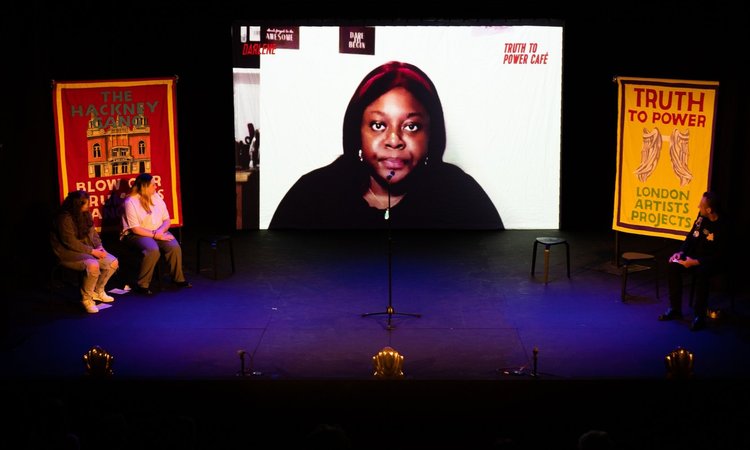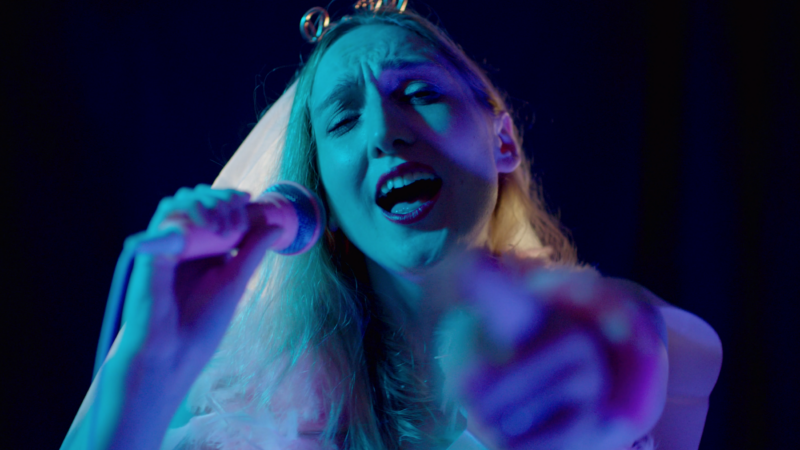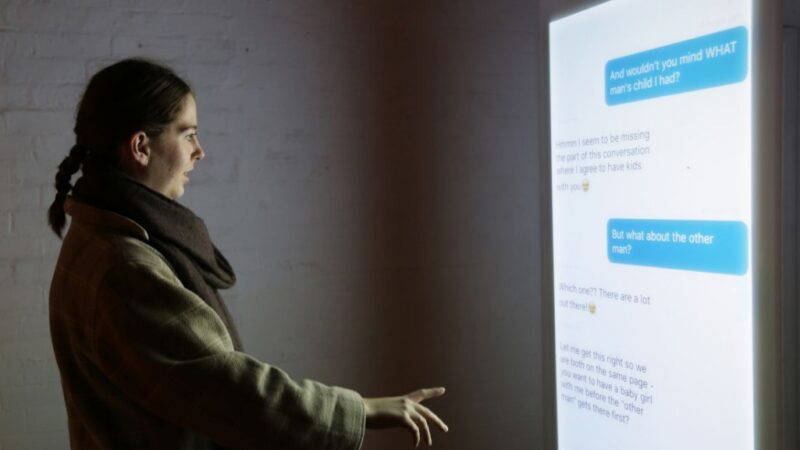A multiplatform artwork grappling with a global issue and in search of a worldwide audience – artists Cath Le Couteur and Nick Ryan sought to make the hidden world of space junk visible, audible and personal with Adrift. This case study explores how Nick and Cath created original artworks, utilised different online platforms for different aspects of the piece and attracted the widest possible audience.
Adrift is a multiplatform art project about space junk – man-made debris in space caused by space missions which is an increasing environmental challenge. The artists behind the project Cath Le Couteur and Nick Ryan wanted to create an experience for audiences to engage personally and emotionally with the issue. The work comprises three parts:
- Adrift: A documentary about space junk
Cath Le Couteur directed and produced a short documentary about space junk. ‘Adrift’ takes the story of astronaut Piers Sellers who accidentally dropped his spatula in space as its starting point. The film then journeys across the remote deserts of Chile with astronomers, shifts to the threatening space junk skies, inhabited by the International Space Station and tracks the crash of a rocket part back to Earth. The film is narrated by the oldest piece of space junk – Vanguard – voiced by Sally Potter.
- Machine 9: a mechanical sound instrument which ‘sonifies space junk’
Using live data, Nick Ryan has created a sound installation to translate the movement of pieces of space debris into sound in real time. When a piece of space junk passes overhead the machine plays a unique sound, creating a live audio composition.
- Space-twitbots: that allow audiences to adopt one of three individual pieces of space junk and communicate with them live via Twitter as they orbit Earth.
Cath and Nick, together with creative technologist Dan Jones, created an Orbital Mechanics Simulator that pulled together databases tracking space junk live, including what town they were flying over at any point in time, their distance from Earth and much more. They then selected three pieces of space junk – Vanguard, Fengyun And SuitSat – and writers were commissioned to develop their characters and stories. Short films, created by Cath, introduced these ‘characters’ to audiences to help them decide which piece to adopt. ‘SuitSat’ was voiced by Super Furry Animals lead singer Gruff Rhys. ‘Vanguard’ was voiced by director and actress Sally Potter. ‘Fengyun’ was voiced by musician and performer Delilah Holiday. Audiences were able to follow and interact with any of the space-bots via Twitter.
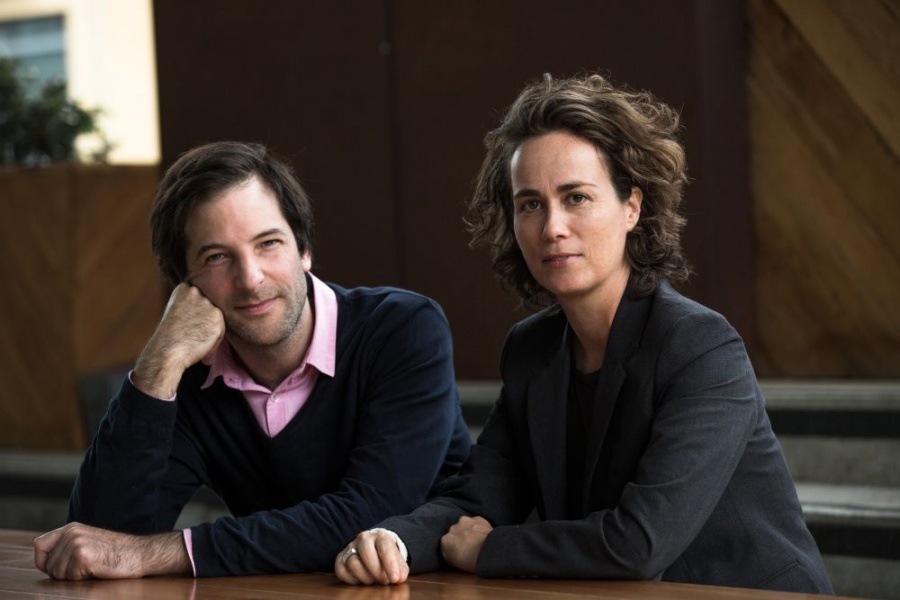
The central aim of the project was to engage a wide range of audiences with the issue of space junk by viewing, listening or interacting with one or more elements of the project. Therefore, the metrics that the success of the project was judged against were:
- Twitbots – interactions
- Film – views
- Machine 9 – live audience. Although this is not something that The Space measures as it falls outside its core remit for digital engagement, the team were keen to understand the interest in and impact of Machine 9 as part of the piece.
Adrift was commissioned as part of The Space’s Create Digital strand which explores new forms of digital storytelling, interactivity and participation. The initial, overall target for Adrift’s audience reach was 30,000. The project has far exceeded this target.
This case study is based on interviews with artists Cath Le Couteur and Nick Ryan, The Space Head of Audience Development Owen Hopkin and The Space Communications Manager Angela Hughes.
Approach
Working on digital art and finding the right platforms:
At the beginning, Cath and Nick’s primary focus was thinking through how they could open up the world of space junk for audiences in ways that were meaningful for them. Cath was interested in the emotional and contradictory elements, and the stories of different people’s connections to space junksoundlessness of space junk and wanted to give voice to this hidden, quiet world, and both Nick and Cath were fascinated by the live data that existed publically, and wanted to create a compelling way for audiences to interact. At this early stage of thinking through the project Cath and Nick wanted to come up with an experience that would allow audiences multiple entry points by watching, listening or interacting.
Their first step was to do extensive research and work with Dan Jones to build an Orbital Mechanical Simulator that integrated the information issued by existing open-source databases that track space debris. Pulling together all the available information into one place helped them to understand the nature of space junk and narrow down what shape these three elements could take – all of which changed over the course of the development process.
Although Adrift is a digital artwork, both Cath and Nick were keen to emphasise that they did not start their artistic process by thinking they had to create something for the online environment. Rather, the web offered a variety of tools that supported and enhanced their ideas and what they wanted to achieve. In this case:
- A wide range of platforms to support multiple parts of the project’s content including Twitter, SoundCloud, and Vimeo.
- Opportunities for people to interact directly with space junk. The interaction technology available online gives artists a chance to create a genuine connectedness between audiences and a work. This was crucial for Nick and Cath to get audiences to engage emotionally with space junk in the way they hoped.
- Open source data – There are several databases that publish information about space junk and the team used these feeds to build their own which underpinned the twitbots and Machine 9.
- Worldwide reach – the global nature of the internet mirrored the global nature of the issue
- Existing and emerging narratives around space junk – articles and research that already existed that the Adrift team could link to/from
Cath and Nick did not decide on the final platforms they were going to use until quite far into the process and it was key for them not to define things too early. Both emphasised that their content should dictate the platform, not the other way around.
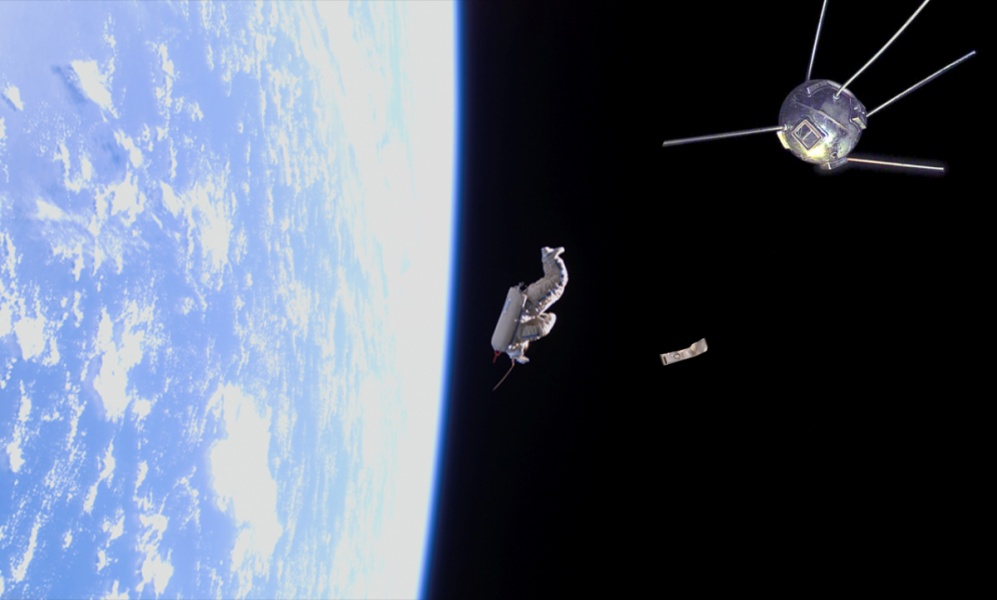
Cath added: “Think about what is the provocation. Or what is the central question that might be meaningful for you. Then think about what is the best way to reveal that through form, rather than attaching form as a starting point. Where online becomes invisible is where it is interesting for me – because the form has then emerged out of necessity, from the guts of feelings, questions. Which is hopefully what audiences will also connect with.
Working with specialists:
Dr Hugh Lewis, head of Astronautics Research at the University of Southampton, was a scientific advisor for the project and was invaluable to Nick and Cath in terms of ensuring the science behind the piece was as rigorous as they wanted it to be, and then also later in spreading the word amongst the science community. (see Engaging the Audience, below).
Cath and Nick also worked with professional writers to script the twitbots to find the right voice and tone for each of them. They said it’s good to seek out experts in their fields to work on aspects of a project you may have less experience of, and that they can greatly add to the richness of the finished piece.
Seek out sponsors and partners:
The Adrift team worked hard to find partners and sponsors who really bought into the project. There were a huge range on Adrift, ranging from a contemporary gallery in Norway to technology sponsors. Both Nick and Cath agreed that it is a good idea to think laterally about different aspects of the project that might appeal to different partners.
Bowers and Wilkins were one of three sponsors of the sound installation. They provided in-kind sponsorship by providing the speakers – a vital part of Machine 9. They also later promoted Adrift across their networks and hosted the content on their website and social media – showing how sponsors’ networks can be leveraged to find new audiences.
Furthermore, Bowers and Wilkins offered to make a film about Machine 9. Nick feared that there might not be anything in it for the company but, when the short film was picked up and widely shown with the Bowers and Wilkins speakers clearly in view, he saw how mutually beneficial it was. Nick said that spending time finding the right partnerships early in the process was crucial. He said: “Find people who will help you to achieve what you want to achieve.”
Optimise your platforms:
Cath worked with Vimeo to get her documentary onto the best possible footing as well as worked with a variety of different video partners. Vimeo was a crucial platform because of its wide-reaching engagement with other artists – which meant that the film was shared extensively. Other partners that Cath developed additional content for included Nowness, Nat-Geo and SnapChat. Each of these took some elements of the film component and then shared the entire project more widely.
Landing page as well as embedding content:
There is a website for Adrift but Nick and Cath were clear from the outset that this was unlikely to be most people’s starting point. They wanted to get the message out there and knew this was going to work best by working with many different platforms (see Engaging the Audience, below). However, they recognised that there also needed to be one key space, that linked the different streams. Therefore they created the website that everything wound back to and that would also allow audiences the full experience.
Engaging the audience
At an early stage, Nick and Cath identified the audiences that they thought would be most interested in Adrift; this audience profile included astronomical associations, citizen science groups and arts communities. Throughout the process, others – including The Space’s commissioning team – fed into that so by the time of the launch they had a clear idea of a range of target audiences they wanted to reach.
Owen Hopkin, Head of Audience Development at The Space, said everyone was keen not to frame Adrift as just an “art project” because it had so many angles – science, art, engineering, environmental, geopolitical, and many more – and they wanted to use these to deliver maximum audiences.
Before the launch, The Space helped Cath and Nick bring a PR specialist onto the team. Owen said they carefully researched who to bring on board in this role to guarantee the person had the portfolio of skills they needed. They knew they needed someone with science PR experience, who would bring the knowledge and networks to connect with the audiences and the media that Cath and Nick were keen to attract. Angela Hughes, The Space’s Communications Manager, agreed that researching PR support is key – she called the Science Museum’s Head of Communications to help find the right person for the role.
Having scientific advisor Dr Hugh Lewis was also vital in publicising the project. Cath and Nick sought Hugh out in the early stages for scientific input. Later down the track, Hugh himself saw the immense value in being more publicly attached to the project because it also helped him get word out about new advances being made to tackle space junk that he was involved in. Angela said it is important to spend some time early on thinking about a project’s angles and then thinking through the spokespeople you have to discuss them in the media as well as which media outlets will be interested in which angles. Dr Lewis was crucial for attracting and speaking to the science media.
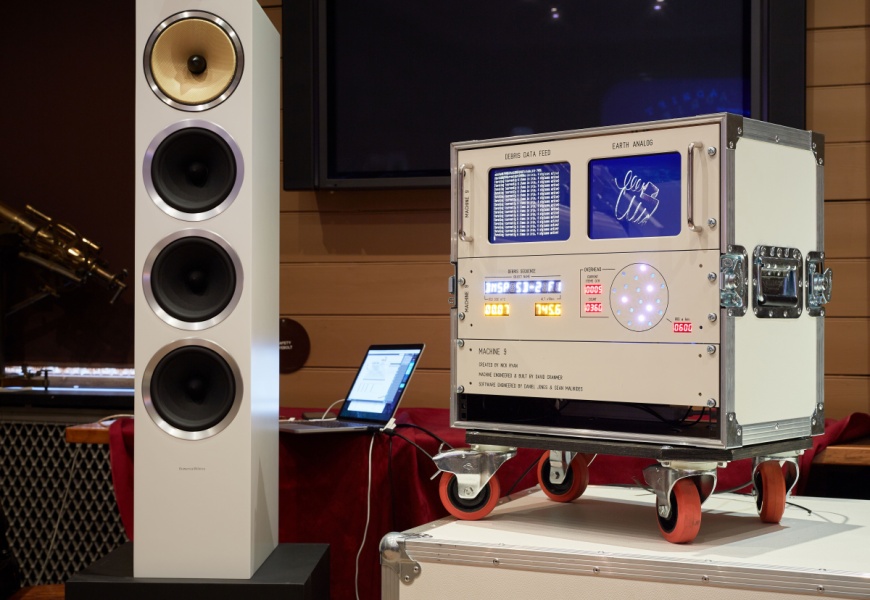
The team also chose the social media channels they used to market the project very carefully. There was only a small team so they focused on key platforms: Twitter allowed them to market and do the outreach to the various communities they were targeting. A vital component of the online marketing was introducing their online communications member of the team, Kris Thobroe, who was vital to growing audience reach via social media.
Cath and Nick emphasised that they did a lot of work at an early stage to think about audience development and what marketing options could work for different groups. Cath said it was crucial to do this at the outset and then work closely with new team members to grow the initial ideas together – “You can’t just hire a social media marketing person and sit back and expect them to do everything.”
The team launched Adrift at the Royal Astronomical Society. Nick said he insisted that Machine 9 was shown in a venue. He felt it was a piece of work that needed to be seen in person and witnessed for a period of time. It was challenge convincing everyone that this was a vital part of the package but as soon as Machine 9 was in situ, everyone agreed it needed to be seen to be understood.
The Society is not a ‘venue for hire’ so the team had to make their case to the President in order to launch there. Angela said artists should think carefully about where to launch their projects and to make the pairing work thematically if possible. She added that it is good to be ambitious, as the Adrift team was with the Society.
After the launch, Machine 9 was invited to be shown in an exhibition at the Science Museum – something that had not been fixed ahead of the launch, showing how powerful launches can be. Angela said: “Launches are resource-intensive and can be costly but if the project is right it can give you a springboard and can be well worth doing. It gives you a moment in time with interested people together – if you get it right, there is a massive call to action for everyone there.”
Outcomes
As of November 2017, the total number of online interactions/sessions for the project were over 350,000 – doubling the original aim, and the numbers continue to grow.
As a breakdown of the different elements of Adrift:
Video Views (Vimeo): 48,413
Additional Video Views (Nat Geo, YouTube, Nowness etc): 241,888
Twitbot Interactions: 48,500
Sessions on the Adrift website: 15,580
However, this is not the full picture of the reach of the project and the chosen metrics do not reflect its overall success. At the Science Museum, Machine 9 was seen by an estimated total audience of 3,600. Furthermore, an independent media assessment from Southampton University Media Communications Team, who tracked all publicity around the project, indicated Project Adrift reached over 300million people worldwide.
It also had enormous press reach, with coverage on outlets ranging from the Today programme, the Smithsonian, the Japan Times, Evening Standard, Independent, Zululand Observer, ABC National, Wired, New Scientist and Radio 3 Night Waves amongst others.
The project has continued to garner interest globally with offers to screen the project at a variety of music, arts and film festivals, including WOMAD, Port Elliot festival, New Media Festival LA, Short Shorts Asia, as well as science institutions, and galleries. Adrift has also recently won ‘‘Best Foreign Short’, Hollywood International Independent Documentary Awards and
‘Award of Excellence: Documentary Short’, Accolade Global Film Competition.
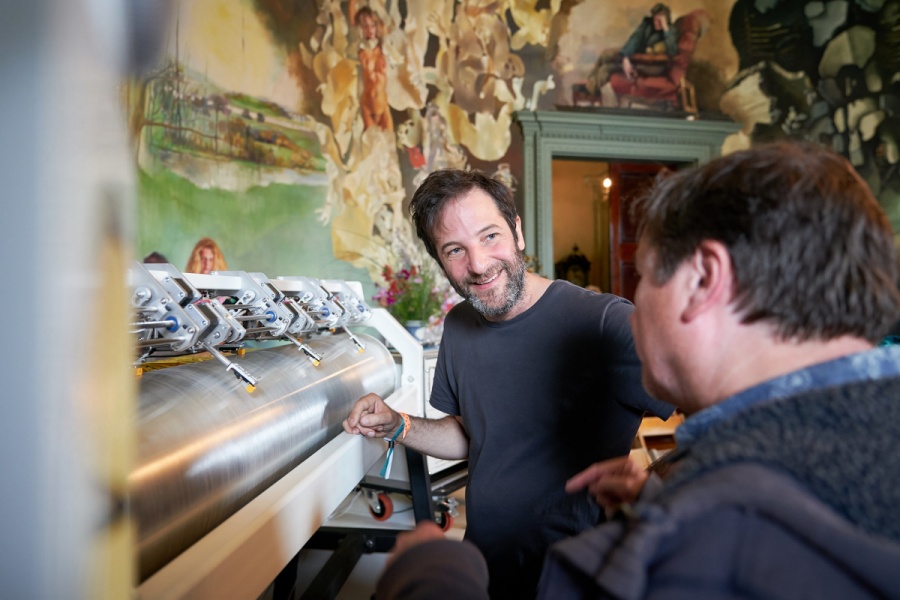
Top tips
- Let the content dictate the platform rather than deciding to do something on Twitter/Facebook/in VR etc. and then trying to think of something; the art should come first and the platform should enhance it, not freeze it into a set shape.
- Have a direct and good relationship with your commissioner and make your contact with them little and often so that they know what is going on and are on board as projects can shift. Collaborate with the commissioning team and get them on board creatively with the project.
- Build a team of specialists from other fields around you and use their expertise.
- Seek out a range of sponsors who can be partners and buy into the project, especially if there is anything mutually beneficial you can work together on. Think laterally about who they might be.
- Make sure you have optimised the platforms you are using to get the most exposure.
- Carefully research people you are bringing on to help you with the project, including marketing and PR professionals. Look at people’s profiles on sites like LinkedIn, look at their Twitter profiles and seek advice and recommendations.
- Think through press angles early and plan a campaign with these in mind. Create a target list of media outlets with the stories you plan to pitch into them alongside and start plugging.
- Think about which social media platforms will work best for your project and focus your resources on them.
- Think about whether a launch event would work for your project – they are time-consuming and can be expensive, but can also make the difference in terms of getting the word out if done right.
- If you are having a launch event, be ambitious about where you want to do and choose somewhere that chimes thematically with the project you are launching.
“The biggest tip from me as an artist is to gather people around you who are really into it artistically. Although we are the named artists on this piece, the project was made by a massive team of people. You cannot make a project with that many facets on your own.” Nick Ryan
“Find people who are also super fun to work with. Any creative project goes through various problems and stresses, but working with people you really like, makes a huge difference.’ Cath Le Couteur
Links
www.projectadrift.co.uk
About Cath Le Couteur
Cath studied Directing at the National Film and Television School. Her short films won a number of awards and screened at key festivals around the world including Edinburgh, Berlinale and Cannes. She won the Sundance Alfred P Sloan Development Award to develop fiction feature ‘Bed’ and is a fellow of the prestigious MacDowell Colony and Rockefeller Bellagio Artist Residencies. She is a co-founder of Shooting People, the renowned online filmmakers collective (UK/NY) of 45,000 filmmakers. She currently sits on the board of Directors UK.
About Nick Ryan
Nick is an audio specialist, sound designer, composer and artist, widely recognised for his uniquely conceptual approach to creating audio experiences. Much of his work involves applying emerging technologies to the making process, or introducing people to new ways of thinking about audio. He is regularly invited to perform his work and speak about the future of sound at venues throughout the world such as The MIT Media Lab, The BBC, The BANFF Centre for the Arts and The Royal Institution. He is the recipient of a BAFTA for Technical Innovation and The PRS New Music Award and is an Honorary Doctor of Music at Plymouth University.
How useful was this resource?

